Discover 20 hidden attractions, cool sights, and unusual things to do in Kamakura (Japan). Don't miss out on these must-see attractions: Kōtoku-in, Tsurugaoka Hachimangu, and Kenchō-ji. Also, be sure to include Hase-dera in your itinerary.
Below, you can find the list of the most amazing places you should visit in Kamakura (Kanagawa).
Table of Contents
Kōtoku-in

Also known as: 高徳院
Temple with a huge statue of the Buddha. Kōtoku-in is a Buddhist temple of the Jōdo-shū sect, in the city of Kamakura in Kanagawa Prefecture, Japan. Its mountain name is Taiizan, and its common temple name is Shōjōsen-ji.
The temple is renowned for The Great Buddha of Kamakura, a monumental outdoor bronze statue of Amitābha, which is one of the most famous icons of Japan. It is also a designated National Treasure, and one of the twenty-two historic sites included in Kamakura's proposal for inclusion in UNESCO's World Heritage Sites.[1]
Address: 4-chōme-2-28 Hase, Kamakura, 248-0016 Kamakura
Tsurugaoka Hachimangu
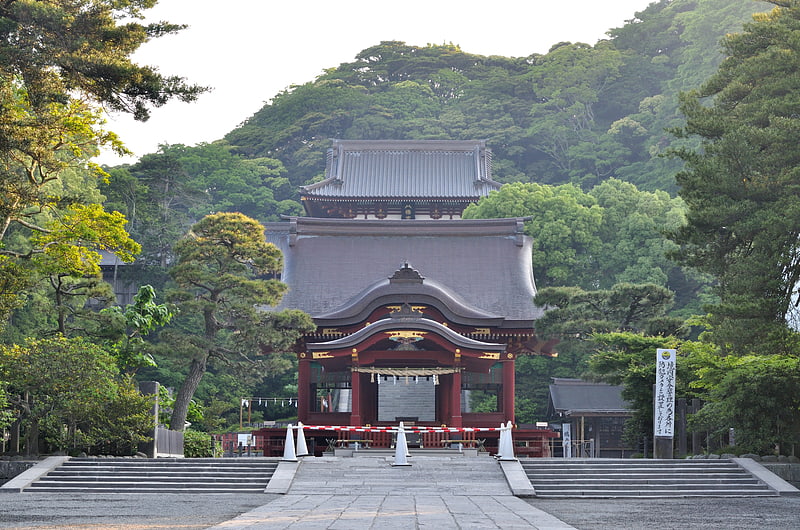
Also known as: 鶴岡八幡宮
19th-century traditional Shinto shrine. Tsurugaoka Hachimangū is the most important Shinto shrine in the city of Kamakura, Kanagawa Prefecture, Japan. The shrine is a cultural center of the city of Kamakura and serves as the venue of many of its most important festivals with two museums.
For most of its history, it served both as a Hachiman shrine, and in latter years a Tendai Buddhist temple typical of Japanese Buddhist architecture. The famed Buddhist priest Nichiren Daishonin once reputedly visited the shrine to reprimand the kami Hachiman just before his execution at Shichirigahama beach.
A former one thousand year old ginkgo tree near its entrance was uprooted by a storm on 10 March 2010. The shrine continues to serve as one of the Important Cultural Properties of Japan.[2]
Address: 2-1-31 Yukinoshita, 248-0005 Kamakura
Kenchō-ji

Also known as: 建長寺
Longtime Zen temple complex with garden. Kenchō-ji is a Rinzai Zen temple in Kamakura, Kanagawa Prefecture, Japan, which ranks first among Kamakura's so-called Five Great Zen Temples and is the oldest Zen training monastery in Japan. These temples were at the top of the Five Mountain System, a network of Zen temples started by the Hōjō Regents. Still very large, it originally had a full shichidō garan and 49 subtemples.
The sangō is Kofukusan (巨福山).
The temple was constructed on the orders of Emperor Go-Fukakusa and completed in 1253, fifth year of the Kenchō era, from which it takes its name. It was founded by Rankei Doryū, a Chinese Zen master who moved to Japan in 1246, spending some years in Kyushu and Kyoto before coming to Kamakura.[3]
Address: 8 Yamanouchi, 247-0062 Kamakura
Hase-dera
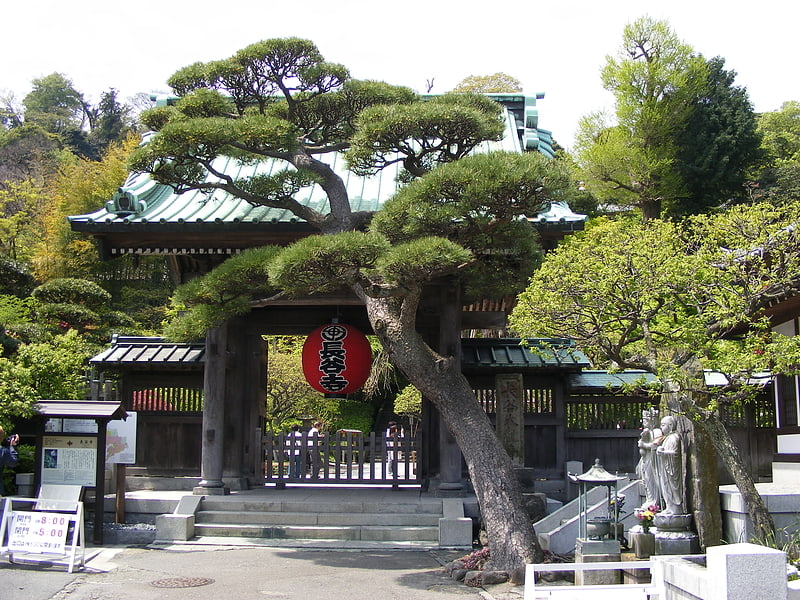
Also known as: 長谷寺
8th-century Buddhist temple complex. Hase-dera, commonly called the Hase-kannon is one of the Buddhist temples in the city of Kamakura in Kanagawa Prefecture, Japan, famous for housing a massive wooden statue of Kannon.
The temple originally belonged to the Tendai sect of Buddhism, but eventually became an independent temple of the Jōdo-shū.[4]
Address: 3-11-2 Hase, 248-0016 Kamakura
Engaku-ji
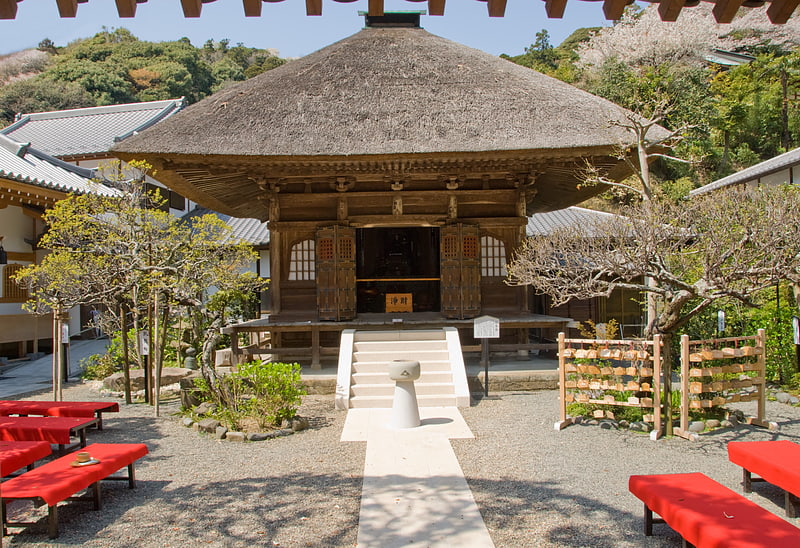
Also known as: 円覚寺
13th-century Zen Buddhist temple complex. Zuirokusan Engaku Kōshō Zenji, or Engaku-ji, is one of the most important Zen Buddhist temple complexes in Japan and is ranked second among Kamakura's Five Mountains. It is situated in the city of Kamakura, in Kanagawa prefecture to the south of Tokyo.
Founded in 1282 (Kamakura period, the temple maintains the classical Japanese Zen monastic design, and both the Shariden and the Great Bell (大鐘, Ogane) are designated National Treasures. Engaku-ji is one of the twenty-two historic sites included in Kamakura's proposal for inclusion in UNESCO's World Heritage Sites.
It is located in Kita-Kamakura, very close to Kita-Kamakura Station on the Yokosuka Line, and indeed the railway tracks cut across the formal entrance to the temple compound, which is by a path beside a pond which is crossed by a small bridge.[5]
Address: 409 Yamanochi, 247-0062 Kamakura
Zeniarai Benzaiten Ugafuku Shrine
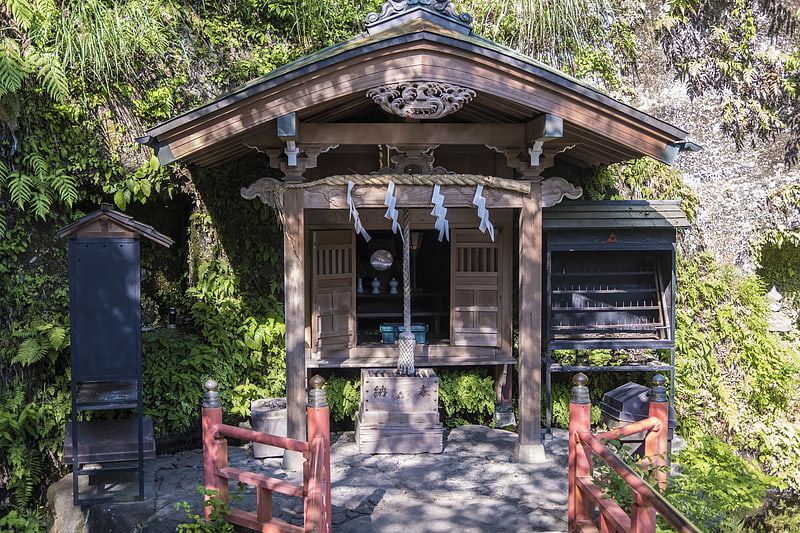
Also known as: 銭洗弁財天宇賀福神社
Small shrine with a money-washing ritual. Zeniarai Benzaiten Ugafuku Shrine, popularly known simply as Zeniarai Benten, is a Shinto shrine in Kamakura, Kanagawa, Kanagawa prefecture, Japan. In spite of its small size, it is the second most popular spot in Kamakura, Kanagawa prefecture after Tsurugaoka Hachiman-gū. Zeniarai Benzaiten is popular among tourists because the waters of a spring in its cave are said to be able to multiply the money washed in it. The object of worship is a syncretic kami which fuses a traditional spirit called Ugafukujin with the Buddhist goddess of Indian origin Sarasvati, known in Japanese as Benzaiten. The shrine is one of the minority in Japan which still shows the fusion of native religious beliefs and foreign Buddhism which was normal before the Meiji restoration. Zeniarai Benzaiten used to be an external massha of Ōgigayatsu's Yazaka Daijin, but became independent in 1970 under its present name.[6]
Address: 2-25-16 Sasuke, 248-0017 Kamakura
Kamakura Museum of National Treasures
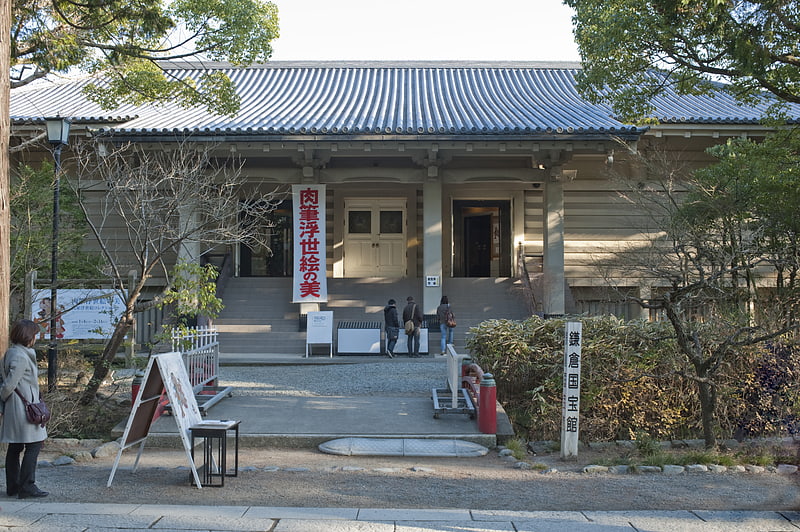
Also known as: 鎌倉国宝館
Museum in Kamakura, Japan. The Kamakura Museum of National Treasures or Kamakura Museum or Kamakura National Treasure House is a museum located on the grounds of Tsurugaoka Hachiman-gū in Yukinoshita, Kamakura, Kanagawa Prefecture, Japan. The museum houses around 4800 objects from the Kamakura region including sculptures, paintings and industrial art objects. Most of these works originate from the Kamakura and Muromachi periods, spanning from the 12th to the 16th century. Some of the items were produced in China and imported to Japan.[7]
Address: 2-1-1 Yukinoshita, 248-0005 Kamakura
Sasuke Inari Shrine

Also known as: 佐助稲荷神社
Shinto shrine in Kamakura, Japan. Sasuke Inari Shrine is a Shinto shrine in Kamakura and the site of the Hidden Village of Kamakura. It is located very near the Zeniarai Benzaiten Ugafuku Shrine.[8]
Address: 2-22-12 Sasuke, 248-0017 Kamakura
Meigetsu-in
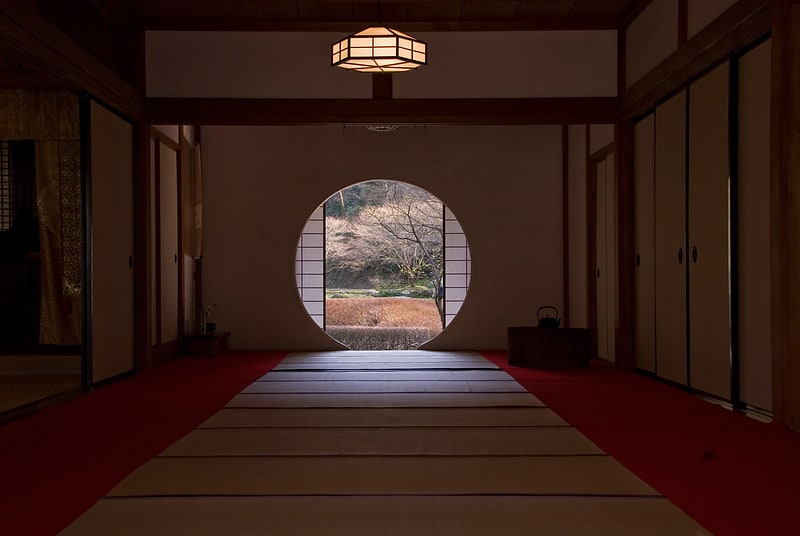
Also known as: 明月院
Temple in Kamakura, Japan. Fugenzan Meigetsu-in is a Rinzai Zen temple of the Kenchō-ji school in Kita-Kamakura, Kanagawa, Japan. Famous for its hydrangeas, it's also known as The Temple of Hydrangeas. The main object of worship is goddess Shō Kannon.[9]
Address: 189 Yamanochi, 247-0062 Kamakura
Tomb of Minamoto no Yoritomo
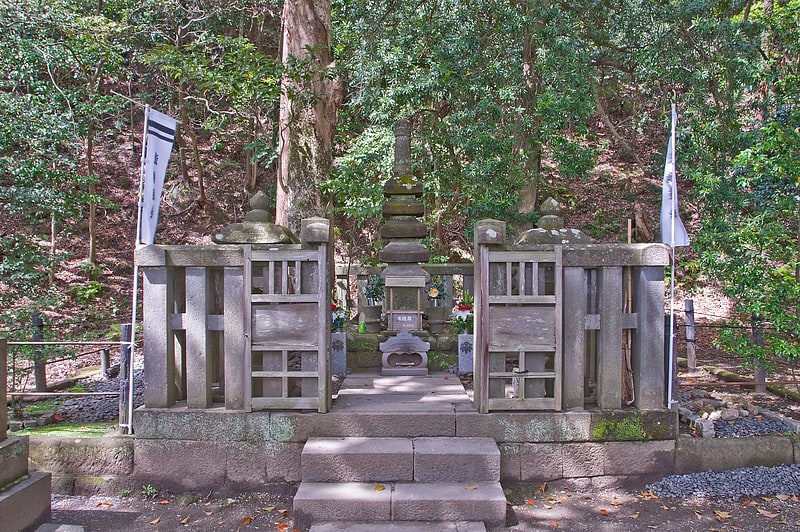
The tomb of Minamoto no Yoritomo is a monument in Kamakura, Kanagawa, Japan, located some hundred meters north of the site where the palace called Ōkura Bakufu, seat of Minamoto no Yoritomo's government, once stood. Although there is no evidence his remains are actually there, it is commonly assumed to be the resting place of Minamoto no Yoritomo, founder and first shōgun of the Kamakura shogunate. The cenotaph consists of a 186 cm gorintō surrounded by a stone tamagaki, and was built during the Edo period, far after the shōgun's death in 1199. In the course of history, the site's prestige has attracted other structures, so that now it is occupied by the Site of the Hokke-dō, Shirahata Shrine, and the black stone stele commemorating the Hokke-dō and the mass suicide of the Miura clan. A couple of hundred meters further to the east lie the yagura of the Miura clan, the twin tombs of Oe no Hiromoto and of his son Mōri Suemitsu, and the grave of Yoritomo's illegitimate son Shimazu Tadahisa. The grave of Yoritomo and the ruins of the Hokke-dō are national Historic Sites.[10]
Address: 2 Nishimikado, 248-0004 Kamakura
Kamakura-gū
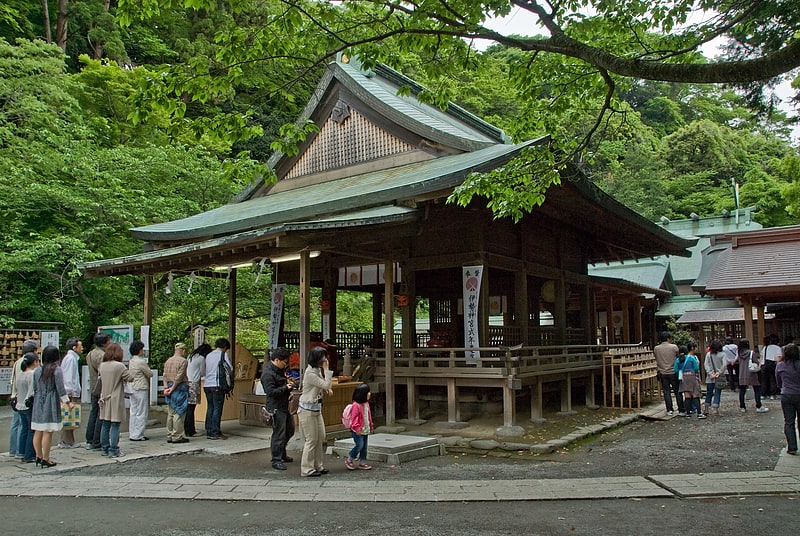
Also known as: 鎌倉宮
Shinto shrine in Kamakura, Japan. Kamakura-gū is a shrine in Kamakura, Kanagawa Prefecture, Japan. It was erected by Emperor Meiji in 1869 to enshrine the spirit of Prince Morinaga, who was imprisoned and later executed where the shrine now stands in 1335 by order of Ashikaga Tadayoshi. For this reason, the shrine is also known as Ōtōnomiya or Daitōnomiya from the Prince's full name.
Prince Morinaga was Ashikaga Takauji's most dangerous political rival in Kyoto, so he was arrested with a pretext by him in 1334 and first kept prisoner there, then had him sent to Kamakura. Ashikaga's younger brother Tadayoshi held Morinaga captive for nine months in a small cave at the site of the present Kamakura-gū. When Tadayoshi was forced to retreat from Kamakura after losing a battle to Hōjō Tokiyuki, before leaving he gave the order for Morinaga's execution. The Prince was beheaded on July 23, 1335. The cave still exists today in the rockface behind the shrine, and is a tourist attraction. It is four meters deep and has an area of 12 square meters.
It is one of the Fifteen Shrines of the Kenmu Restoration.[11]
Yuigahama
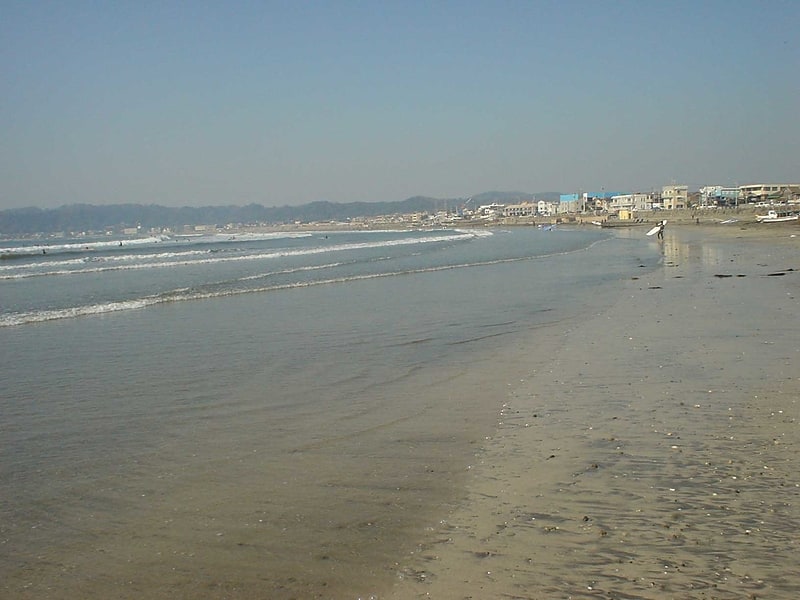
Also known as: 由比ヶ浜
Tourist attraction in Kamakura, Japan. Yuigahama is a beach near Kamakura, a city in Kanagawa Prefecture, Japan. The relation between the beach and its neighboring areas is complex. Although Yuigahama is legally the entire 3.2 km beach that goes from Inamuragasaki, which separates it from Shichirigahama, to Zaimokuza's Iijima cape, which separates it from Kotsubo and the Miura Peninsula, the name is customarily used to indicate the portion west of the Namerigawa river, while the eastern half is called Zaimokuza Beach. This is the reason why, although the beach gives its name to only the west part of the beachside community, traces of the name Yuigahama can be found also in Zaimokuza. The center of Yuigahama came legally into being between 1964 and 1965 and was named after the beach. Today's Yuigahama was until then divided between Zaimokuza, Ōmachi, and Hase.
There are different theories about the origin of the name. According to one it derives from an earlier one, Yuigo (由比郷). According to another it derives from the presence of a cooperative (yui (結)). The name Yui itself has been written in various ways, among them 由井 and 湯井.[12]
Address: 4 Yuigahama, 248-0014 Kamakura
Zuisen-ji

Also known as: 瑞泉寺
Temple in Kamakura, Japan. Kinbyōzan Zuisen-ji is a Buddhist temple of the Rinzai sect in Nikaidō's Momijigayatsu Valley in Kamakura, Japan. During the Muromachi period it was the family temple of the Ashikaga rulers of Kamakura : four of the five kubō are buried there in a private cemetery closed to the public and first kubō Ashikaga Motouji's is also known by the name Zuisen-ji-den. Designed by prominent Zen religious figure, poet and Zen garden designer Musō Soseki, the temple lies on top of an isolated hill and is famous for both its garden and its Zen rock garden. The beauty and the quantity of its plants have gained it since antiquity the nickname "Temple of Flowers". The main object of worship is Jizō Bosatsu. Zuisen-ji is an Historic Site and contains numerous objects classified as Important Cultural Properties and Places of Scenic Beauty.[13]
Address: 710 Nikaido, 248-0002 Kamakura
Ankokuron-ji
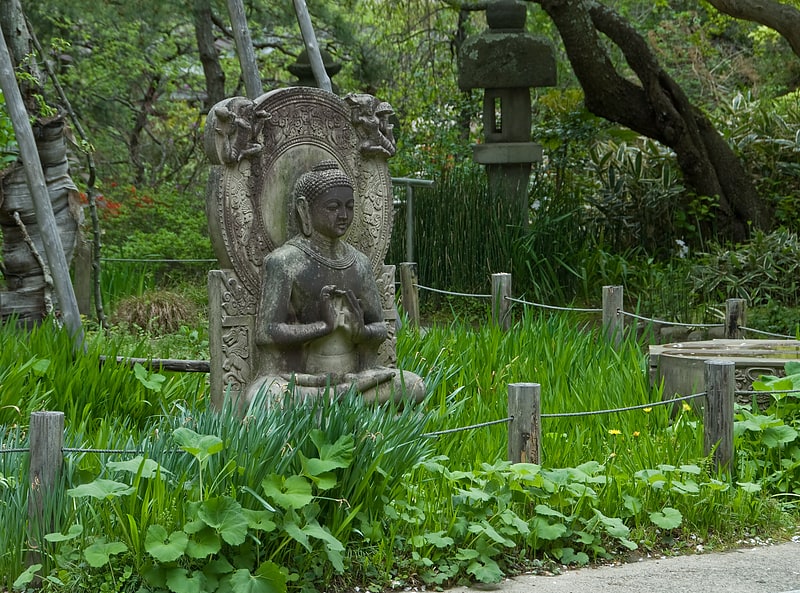
Also known as: 安国論寺
Temple in Kamakura, Japan. Myōhōkekyōzan Ankokuron-ji is a Buddhist temple of the Nichiren sect in Kamakura, Kanagawa, Japan. It is one of a group of three built near the site in Matsubagayatsu (Valley of Pine Needles where Nichiren, founder of the Buddhist sect that bears his name, is supposed to have had his hut.[14]
Address: 4-4-18 Omachi, 248-0007 Kamakura
Sugimoto-dera
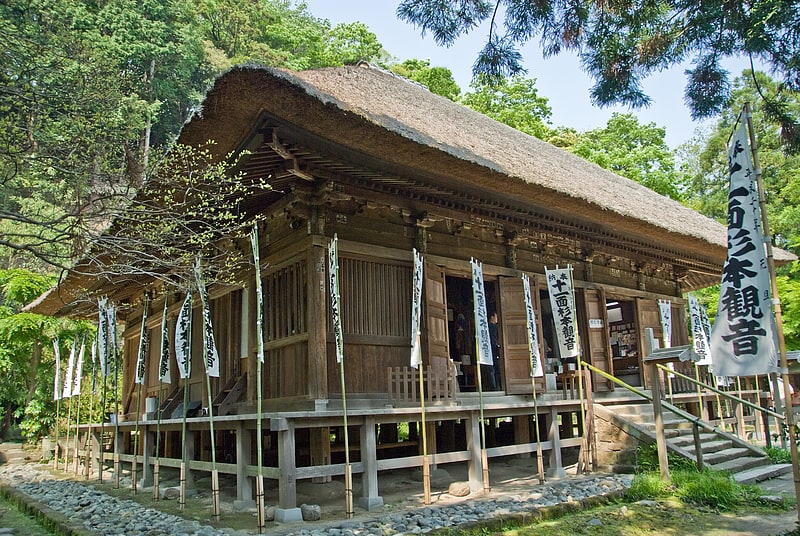
Also known as: 杉本寺
Temple in Kamakura, Japan. Sugimoto-dera is a Buddhist temple in Kamakura, Kanagawa Prefecture, Japan, one of the oldest temples in Kamakura and, together with Hōkai-ji, the only one of the Tendai denomination. The temple is Number one of the Bandō Sanjūsankasho pilgrimage circuit. Two of the three statues of goddess Kannon it enshrines are Important Cultural Properties. Sugimotodera is nicknamed Geba Kannon, because horsemen never failed to dismount from their steeds when they passed by. The temple is a branch temple of Hōkai-ji.[15]
Address: 903 Nikaido, 248-0002 Kamakura
Tōkei-ji

Also known as: 東慶寺
13th-century temple and women's sanctuary. Shōkozan Tōkei-ji, also known as Kakekomi-dera or Enkiri-dera, is a Buddhist temple and a former nunnery, the only survivor of a network of five nunneries called Amagozan, in the city of Kamakura in Kanagawa Prefecture, Japan. It is part of the Rinzai school of Zen's Engaku-ji branch, and was opened by Hōjō Sadatoki in 1285. It is best known as a historic refuge for women who were abused by their husbands. It is for this reason sometimes referred to as the "Divorce Temple".[16]
Address: 1367 Yamanouchi, 247-0062 Kamakura
Shichirigahama
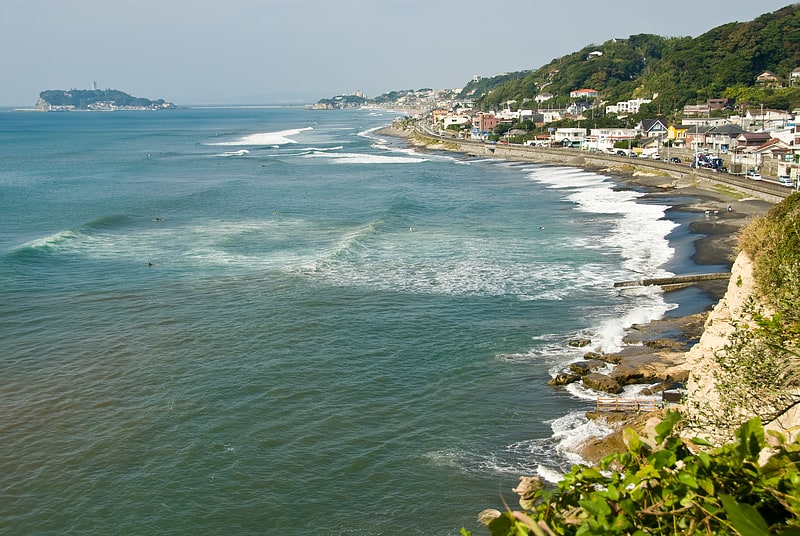
Also known as: 七里ヶ浜
Shichirigahama is a beach near Kamakura, Kanagawa prefecture, Japan, which goes from Koyurigimisaki Cape, near Fujisawa, to Inamuragasaki Cape, west of Kamakura. Since from it one could enjoy a clear view of both Mount Fuji and Enoshima at the same time, during the Edo period it was popular as a subject for ukiyo-e. For example, famous ukiyo-e artists Hiroshige and Hokusai both include it in their 36 Views of Mount Fuji. Its dark sands are rich in iron ore which allowed Kamakura to become a florid center for the production of swords and knives. Its name is usually translated into English as "Seven Ri Beach", the ri being a unit of measurement.
Unlike its easterly neighbor Yuigahama, its floor drops too quickly, so it is not very popular as a sea resort, but surfers are present in every season. Since 1939 it is administratively part of the City of Kamakura. The area is served by the Enoshima Electric Railway, or Enoden, which connects Kamakura Station in Kamakura with Fujisawa Station.[17]
Chōju-ji
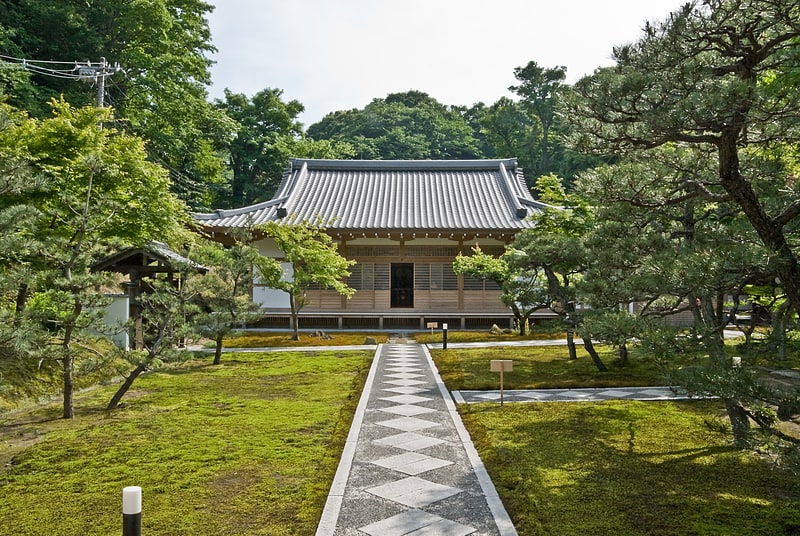
Also known as: 長寿寺
Temple in Kamakura, Japan. Hōkizan Chōju Zenji is a Rinzai Buddhist temple of the Kenchō-ji school in Yamanouchi, near Kamakura, Kanagawa Prefecture, Japan. It lies between two Kita-Kamakura landmarks, the entrance of the Kamegayatsu Pass and Kenchō-ji, the oldest Zen monastery in Japan. Chōju-ji is one of two bodaiji, or funeral temples, dedicated to Ashikaga Takauji, founder of the dynasty of shōguns that carries his name. In its garden there are a gorintō dedicated to the shōgun and a hōkyōintō containing some of his hair. Chōju-ji has recently opened for the first time its doors, and receives visitors from Friday to Sunday, 10 AM to 3 PM. The temple allows the use of pocket cameras, however professional and semiprofessional equipment are forbidden, the reason being that visitors should not visit the temple to take photographs.[18]
Chōshō-ji
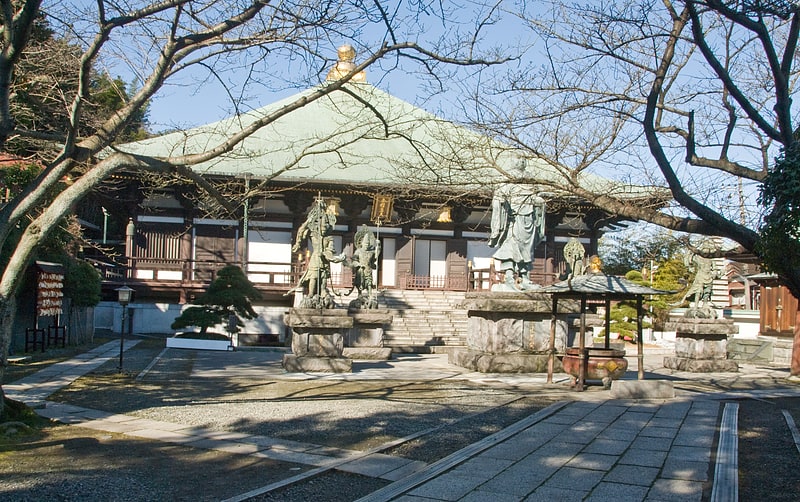
Also known as: 長勝寺
Temple in Kamakura, Japan. Ishiizan Chōshō-ji is a Buddhist temple of the Nichiren Shū in Kamakura, Kanagawa, Japan. It's one of a group of three built near the site in Matsubagayatsu (Valley of Pine Needles where Nichiren, founder of the Buddhist sect that bears his name, is supposed to have had his hut. The first part of its name is derived from the founder's last name, the second is an alternative reading of the characters for Nagakatsu, the founder's first name.[19]
Address: 2-12-17 Zaimokuza, 248-0013 Kamakura
Hōkai-ji
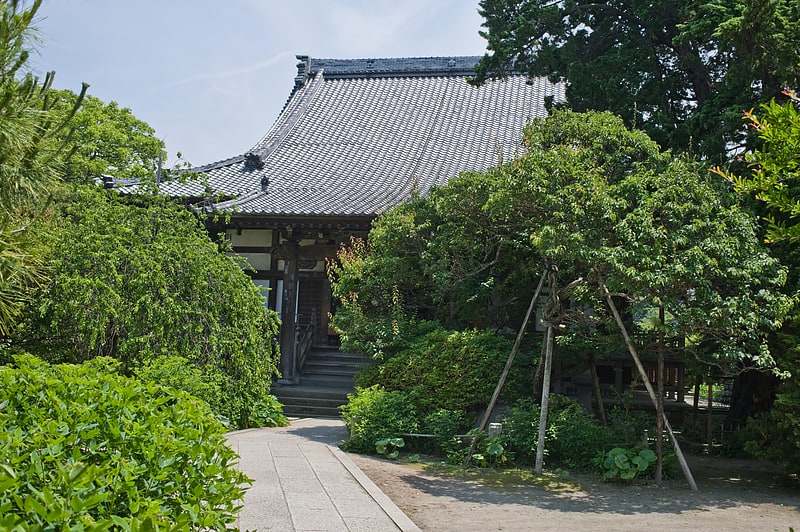
Also known as: 宝戒寺
Temple in Kamakura, Japan. Kinryūzan Shakuman-in Endon Hōkai-ji is a Buddhist temple in Kamakura, Kanagawa Prefecture, Japan. Often called Hagidera, or "bush-clover temple", because those flowers are numerous in its garden, its existence is directly linked to a famous tragedy that on July 4, 1333 wiped out almost the entire Hōjō clan, ruler of Japan for 135 years. The temple was founded expressly to enshrine the souls of the 870 members of the clan who, in accordance with the samurai code of honor, committed suicide on that day at their family temple of Tōshō-ji to escape defeat. Together with ancient Sugimoto-dera, Hōkai-ji is the only temple of the Tendai denomination in Kamakura. Formerly a branch temple of the great Kan'ei-ji, after its destruction it became a branch of Enryaku-ji.[20]
Address: 3-5-22 Komachi, 248-0006 Kamakura